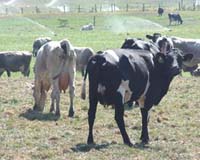 |
Washington DC (SPX) May 20, 2011 The development and successful testing of a method for unreeling the strands of silk in wild silkworm cocoons could clear the way for establishment of new silk industries not only in Asia but also in vast areas of Africa and South America. The report appears in ACS' journal Biomacromolecules. Fritz Vollrath, Tom Gheysens and colleagues explain that silk is made by unraveling- or unreeling - the fine, soft thread from cocoons of silkmoths. The practice began as far back as 3500 BC in ancient China, where silk was the fabric of royalty. Today, most silk comes from cocoons of the domesticated Mulberry silkworm (bred from a species native to Asia) because they are easy to unreel into long continuous strands. The cocoons formed by "wild" species are too tough for this process, so harsher methods are sometimes used. However, these methods damage the strands, producing a poor-quality silk. To overcome this challenge to the widespread commercial use of wild cocoons, the researchers developed a new way to loosen the strands without damaging them. The group found that the surfaces of wild cocoons were coated with a mineral layer and that removing this layer ("demineralizing") made it easy to unreel the cocoons into long continuous strands with commercial reeling equipment. These strands were just as long and strong as those from Mulberry silkworm cocoons. The researchers say that the new method could expand the silk industry to new areas of the world where wild silkworms thrive. The authors acknowledge funding from the Air Force Office of Scientific Research, the European Union, the Biotechnology and Biological Sciences Research Council and Engineering and Physical Sciences Research Council.
Share This Article With Planet Earth
Related Links American Chemical Society Farming Today - Suppliers and Technology
 Agony for Japan livestock farmers in nuclear crisis
Agony for Japan livestock farmers in nuclear crisisFukushima City, Japan (AFP) May 20, 2011 As more people are forced to leave their homes around the stricken Fukushima nuclear plant, anger is growing in a farming community forced to make the agonising decision whether to slaughter livestock or face ruin. The desperate lowing of starving cattle echoes out across the valleys surrounding Katsurao - the only noise breaking an unearthly silence which envelopes the hamlet. No one i ... read more |
|
| The content herein, unless otherwise known to be public domain, are Copyright 1995-2010 - SpaceDaily. AFP and UPI Wire Stories are copyright Agence France-Presse and United Press International. ESA Portal Reports are copyright European Space Agency. All NASA sourced material is public domain. Additional copyrights may apply in whole or part to other bona fide parties. Advertising does not imply endorsement,agreement or approval of any opinions, statements or information provided by SpaceDaily on any Web page published or hosted by SpaceDaily. Privacy Statement |